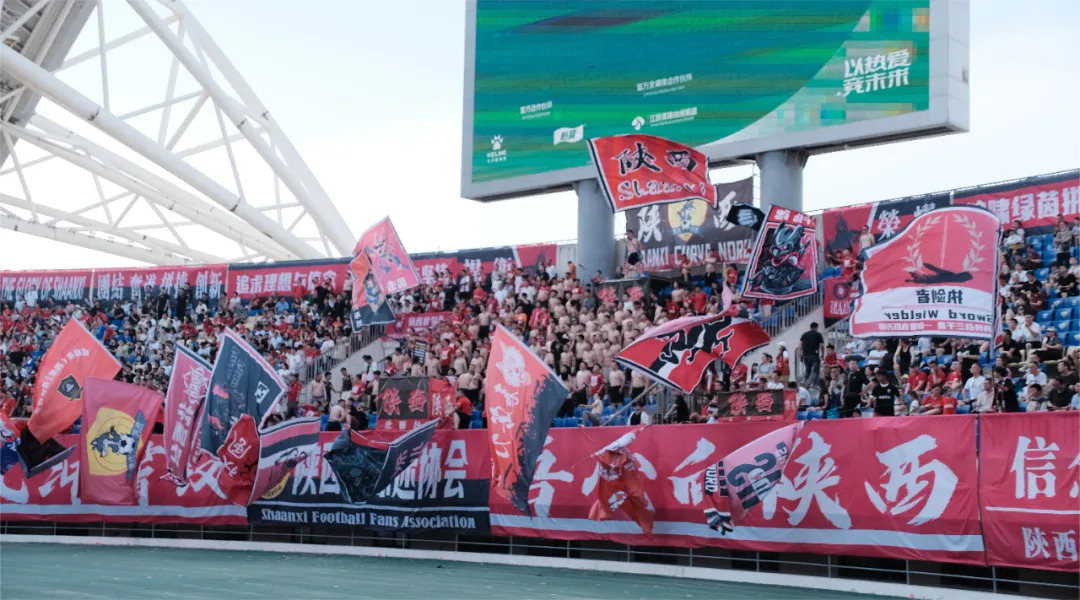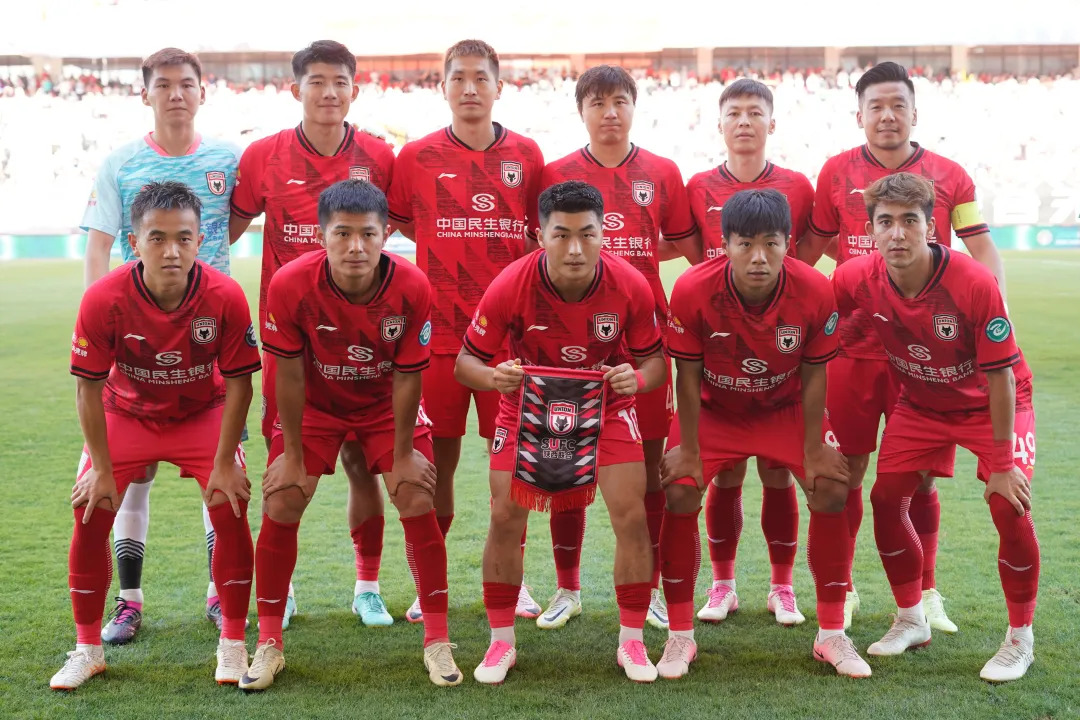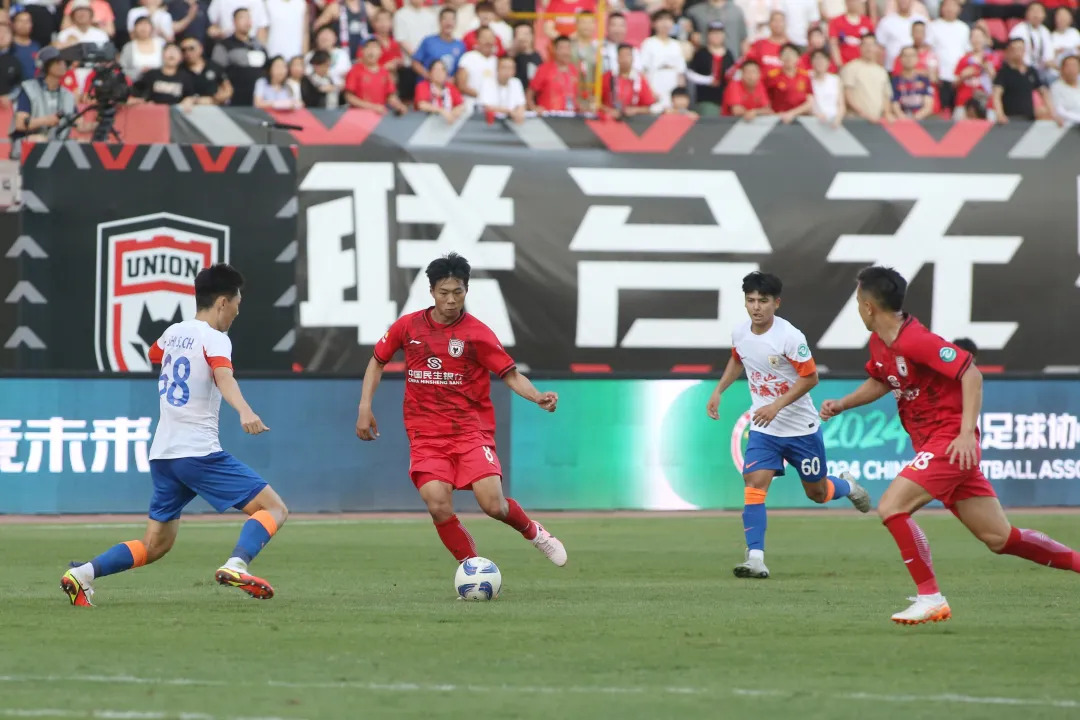Shaanxi Union Football Club made headlines in 2023 as China’s first large-scale, non-profit, membership-based soccer club. An extraordinary level of community engagement has powered the team’s transformation, as nearly 9,000 fans came together to raise 12 million RMB to support the club’s formation. However, Shaanxi Union’s journey has been anything but easy.
In recent years, Chinese soccer has faced significant turmoil. Between 2018 and 2023, nearly 50 professional teams were disbanded, including the Xi’an-based Shaanxi Chang’an Athletic, which at the time was competing in China League One, the second-tier league for professional soccer in China. In March 2023, due to wage arrears, Chang’an Athletic failed to meet the Chinese Football Association’s entry requirements, leading to its disbandment. This left Shaanxi soccer fans heartbroken, but also more determined than ever to save their team.
In response, former club stakeholders and fans initiated efforts to create Shaanxi Union in July 2023. The key difference this time? A new fan-driven membership structure. The new club is modeled after successful European football clubs where fans hold a significant portion of ownership shares.

“I realized that there are actually a lot of clubs in Spain that face this problem, such as Deportivo De La Coruña and Real Oviedo. They all have this membership system and then go out to the community to raise money,” says Langnike, a Chinese soccer blogger and a loyal fan of Shaanxi’s teams. He has followed the game of soccer, especially emerging youth players worldwide, for decades. His screen name borrows from the Chinese name of his favorite coach, Ralf Rangnick, and he has 350,000 followers on Douyin, the Chinese version of TikTok.
“The club had approached me as early as 2022, looking for a new survival strategy,” Langnike explains. His insights reflect the urgency the club’s leadership felt and the belief that fans, rather than outside investors, could solve Shaanxi’s soccer woes.
The core idea behind the membership model was simple: let the fans own the club. Through extensive discussions, Shaanxi Union established itself as a home-based, fan-centered team, adhering to a “fans first” philosophy and “long-termism.” Fans were given the right to vote on critical decisions, and, more importantly, the power to veto major changes.
This model, though unprecedented in Chinese football, quickly garnered support. Despite the outpouring of enthusiasm, however, financial challenges still loomed large.
“We knew then that, although fan enthusiasm was high, the money alone wouldn’t be enough,” Langnike comments. Operational costs such as player salaries, security fees, and travel expenses were substantial, and the club quickly realized that running on membership fees alone would not be sustainable.

The team struggled to deliver consistent performances as the season progressed, and dissatisfaction grew among the fans. Recognizing that external support was needed, the club reached out to Qin Ying Sports, a specialized soccer training institution. After a membership vote, in September 2023 Qin Ying Sports took over 65% ownership, with the remaining 35% still controlled by the fans through an NGO.
“The club could go much further with a professional management team’s help,” Langnike added. This partnership enabled Shaanxi Union to improve its management and training standards, and the results soon followed. The team is gradually getting better and climbing up the table. After starting in China’s fourth-tier football league in April 2023, by the end of the season, they secured promotion to the third-tier, China League Two.
As of March 2024, over 15,000 fans had signed up for memberships, strengthening the club’s community. The increased involvement of fans has had both positive and challenging effects. On one hand, it has created a strong sense of ownership and community among supporters. “Owners may come and go, but fans will always be here,” Langnike emphasized. On the other hand, managing fan expectations while ensuring professional operations requires a careful balancing act. The club has instituted regular updates and meetings to keep fans informed, sending monthly reports to members and keeping communication open.
Shaanxi Union’s innovative model has not gone unnoticed by other clubs in China. Teams such as Liaoning Tieren F.C. have expressed interest in the potential of fan-driven sustainability in a market often dominated by large corporate investments.
In the broader landscape of Chinese soccer, which has seen rapid rises and equally swift collapses, Shaanxi Union offers a fresh approach. While the membership model has flaws, it has provided the club with financial stability that few others in the league can claim. More importantly, it has given fans a genuine voice in the club’s future.

“Union shouldn’t just be a local club for people in Shaanxi; its culture and membership model can attract fans from all over,” Langnike noted optimistically.
Looking ahead, Shaanxi Union will continue to navigate the complexities of balancing professional management and fan engagement. The ultimate goal remains to climb higher within China’s football league system, a journey that will surely rely on the dedication and passion of its fans.
Shaanxi Union Football Club’s story is a testament to the power of collective action. While many clubs have fallen victim to financial pressures and mismanagement, Shaanxi Union has shown that when fans are given a stake in the future of their team, success becomes a shared mission.
There is the possibility that the club will advance into China League One next year, which would be a major accomplishment, but one that could bring greater financial liabilities with it. For the time being, fans like Langnike are thinking about the big picture: “What do I imagine the Shaanxi team should be? It should be one of the few soccer clubs in China that can be self-sustaining — self-sustaining through its business model. And it shouldn’t just attract just fans from Shaanxi, it could even attract foreign fans through its club culture.”
Banner image by Haedi Yue.

















